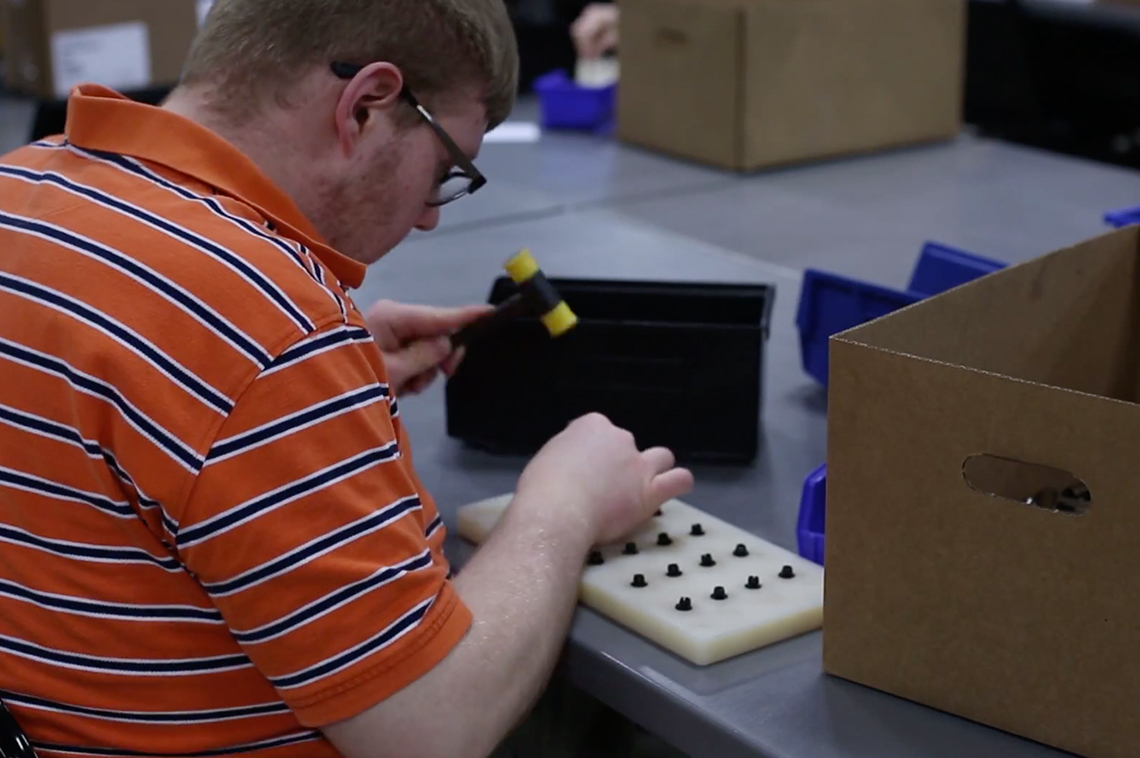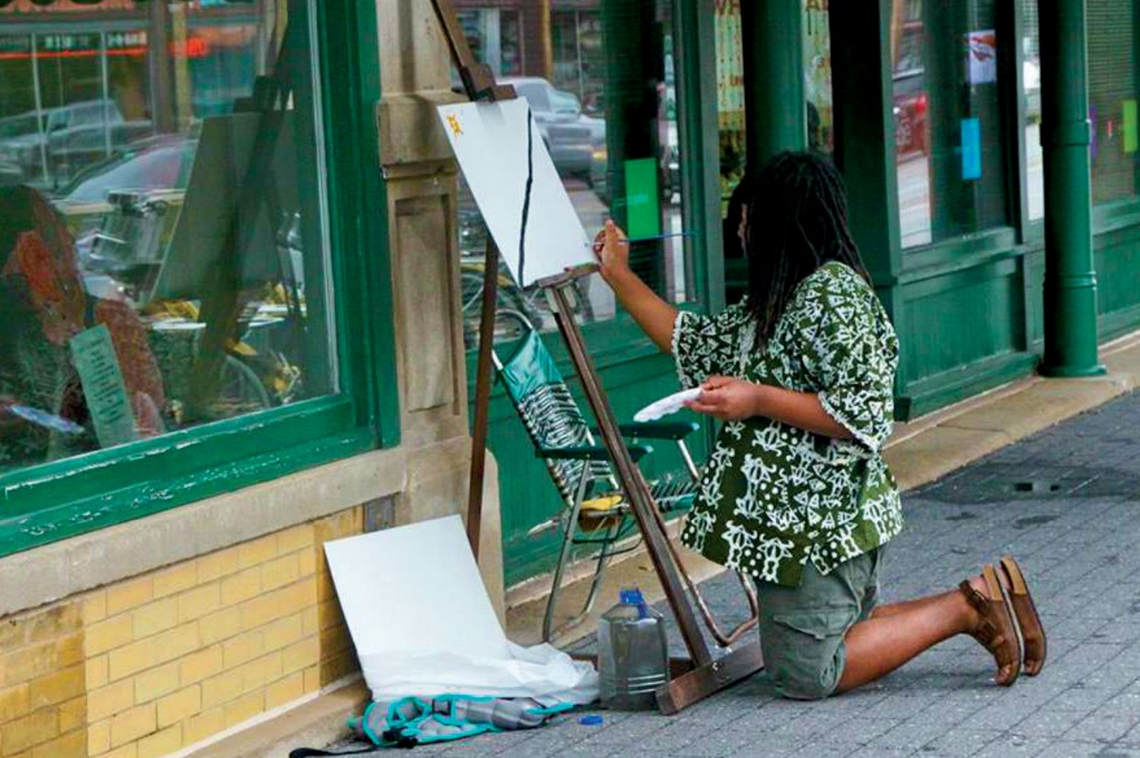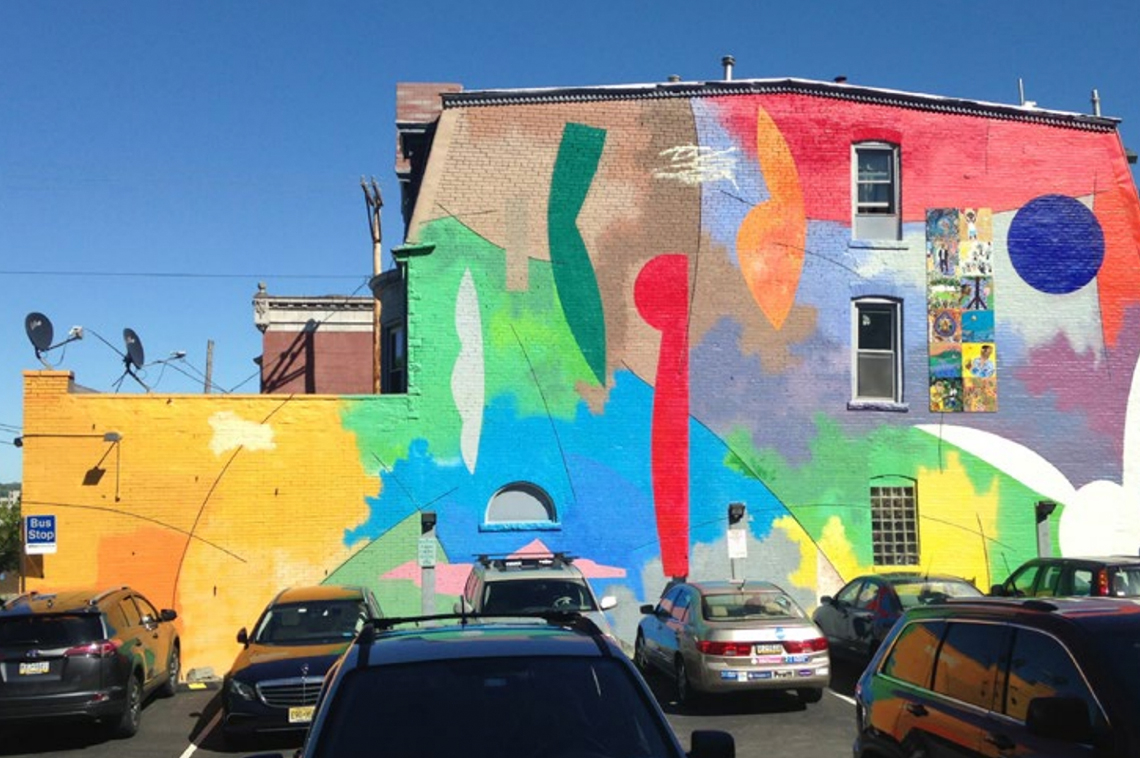



This session took place on May 4, 2018 at the Creative Placemaking Leadership Summit in Madison, New Jersey.
Three influential affordable housing and community development intermediaries—NeighborWorks America, Enterprise Community Partners, and Local Initiatives Support Corporation (LISC)—are serious about incorporating arts and culture into their work.
As they grapple with the lasting effects of structural racism, rapid gentrification, and resources that vary widely from community to community, they’re learning what works, sharing their findings, and continuing to experiment.
Paul Singh, Acting Vice President of Community Initiatives for NeighborWorks, said that their work remains guided by the belief that “every place in America should be a place of opportunity.” Two years ago, NeighborWorks began a planning process to better understand arts, culture, and creative placemaking in the context of housing and community development, and to learn how they could better support their network of over 240 partner organizations, many of which are community development corporations (CDCs). Some of the major challenges they’ve faced are articulating and demonstrating the impact creativity can have on community development; advancing inclusion; avoiding gentrification-led displacement; identifying suitable partners; and, of course, securing funding.
NeighborWorks story: NeighborWorks member organization Pathfinder Services in Huntington, Indiana provides services to adults with disabilities. After a substitute teacher brought art into the classroom and students loved it, Pathfinder developed more arts-involved curriculum—and even ways for residents to sell their work. “It’s been a very empowering strategy,” Singh said, “and one that’s become a part of Huntington’s broader development plans—specifically to counteract depopulation.” The city is currently working to buy a building to transform into an arts hub.
Lynne McCormack, Director of Creative Placemaking for LISC, described her organization’s work as similar to NeighborWorks’, both in its mission and daily work, and in that they have also been investing more resources in pilot projects and experimentation in the past few years. LISC works with the U.S. Department of Housing and Urban Development (HUD) and over 2,000 partners across the country through their 30-plus regional offices. McCormack said that since 1979, LISC has invested $18.6 billion in community development nationwide, through initiatives ranging from credit score building to food justice projects to “More Than Storefronts,” which investigated how “arts and culture can form a critical strand in a comprehensive economic strategy and strengthen the social fabric and dynamism of a community at the same time.” Their creative placemaking program was founded in 2014 and empowers artists to be leaders in the pursuits of racial equity and development without displacement.
LISC story: Trinity Square in Providence, Rhode Island is the gateway to two Victorian Age neighborhoods that are now home to fluctuating immigrant populations who face high unemployment and low incomes. While the city had taken big steps in recent years to improve quality of life for residents—including a $10 million investment in affordable housing and introducing bus rapid transit—the area still found itself dealing with a large homeless population and a general lack of cohesion. With major funding from the Kresge Foundation, support from Mayor Jorge Elorza, and the help of architecture students from the Rhode Island School of Design, among other stakeholders, LISC helped to shepherd the community-led design and installation of SouthLight, a multipurpose public pavilion and garden. In its first year, the space played host to a Sierra Club fair, drumming workshops by Rhode Island Latino Arts, and Sankofa World Market, a greenmarket, among other events. A 2017 LISC blog post quotes yon Tande, program director of partner organization Southside Cultural Center of Rhode Island, as saying, “It’s there to look beautiful and pique your attention. We’re going to use that as a first step. People are asking, ‘What is it?’ Well, at least they’re asking.”
Nella Young, Senior Program Director at Enterprise Community Partners, described her work as focused primarily on the belief that “affordable, healthy, well-designed, well-located housing is key to succeeding in life.” Through both its national initiatives and its work in local markets, Enterprise advocates for policy solutions and makes capital investments to influence positive shifts across the housing landscape—always with a participatory design process. “People like the idea of a creative process when they think about how to define the future of the place they live,” Young said. “Using culture and creativity in our work can build trust, social cohesion, and resilience of community members. It can change neighborhood perceptions of safety, value, and opportunities for development—though we always have to be careful of gentrification.” Young said that between 2011 and 2013, two-third of counties nationwide experienced federally recognized natural disasters. “Social cohesion can mean the difference between life and death in those situations,” she said.
Enterprise story: The American Indian Community Housing Organization (AICHO) in Duluth, Minnesota provides services for people struggling with homelessness and domestic violence. AICHO is housed in a former YWCA building that also includes a cultural center, gallery, store, roof garden, and solar panels that supply them with power during winter weather outages—so they can be a shelter and hub for their whole region. The multi-story mural recently unveiled on one side of their building, funded by an Enterprise grant, is Duluth’s first by Native artists that depicts a Native person. Young said the Native American community has at times been viewed as a drain on Duluth’s social services, but that as AICHO has become a more vital and valued contributor to the area since its founding in the early 1990s, the city’s perspective is changing.
Shared Lessons Learned
- LISC has found the arts to be an asset-based approach—versus a problem-based one—for engaging with residents. Talking about what a community does have rather than what it doesn’t have can be a powerful starting point.
- LISC’s local offices have found creative placemaking to be such a good tool for resident-driven equity changes that they have decided to move their creative placemaking efforts under their economic development umbrella.
- One of Enterprise’s partner organizations now holds a community-led activation at every one of their sites before it’s “developed.”
- Building creative placemaking into Enterprise's climate work has become "second nature" to the organization, which is creating a Climate and Cultural Resilience advisory group.
- Enterprise learned a big, unexpected lesson at many of their focus groups with community members: from unemployed coal miners, residents of Chinatowns, members of Alcoholics Anonymous, Native American communities, and elsewhere, the word “trauma” came up regularly. The organization wants their initiatives to "lift people up," but knows it won’t be able to do that if it doesn’t recognize that historic disinvestments have led to disconnection and lack of trust—the opposites of resilience. The rapid pace of development in some cities is also a stumbling block, since the healing of historic trauma happens on a slower timescale.
- The legacy of structural racism in the affordable housing space is something that can’t be overlooked. Driven by the idea that "you don’t have control until you have site control," LISC strives to assist organizations that are already working in the places they serve, and to help those entities "hold ground" in the face of rapid development and gentrification. But many of those organizations don’t have a history of being stable enough to take on loan capital, which presents a challenge. To this end, LISC is considering how they look at assessing risk and distributing loans: Could they partner with other large area organizations who can assume some of the risk or provide a match? Could they offer a bridge loan? Etc.
- In rapidly developing cities, like Minneapolis-St. Paul, and in already roundly gentrified cities, like Boston, the struggle for holding ground is reaching a "critical" point. In contrast, the opposite effect is hampering post-industrial cities, where there are more real estate opportunities, but fewer resources to secure them.
- The time to implement a shared equity model is when resources are most scarce, NeighborWorks has learned, but that’s also the hardest time to do it.
- NeighborWorks advised that affordable housing groups take the time to think, whenever a change is proposed: "Who’s participating in this change? Who will benefit from it?"





